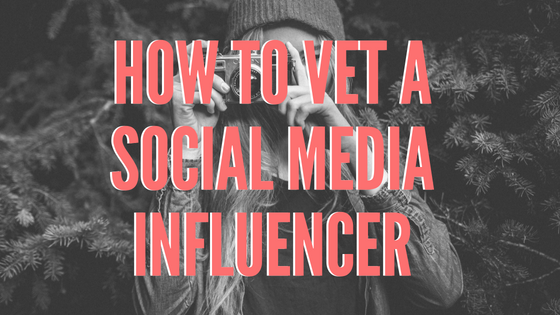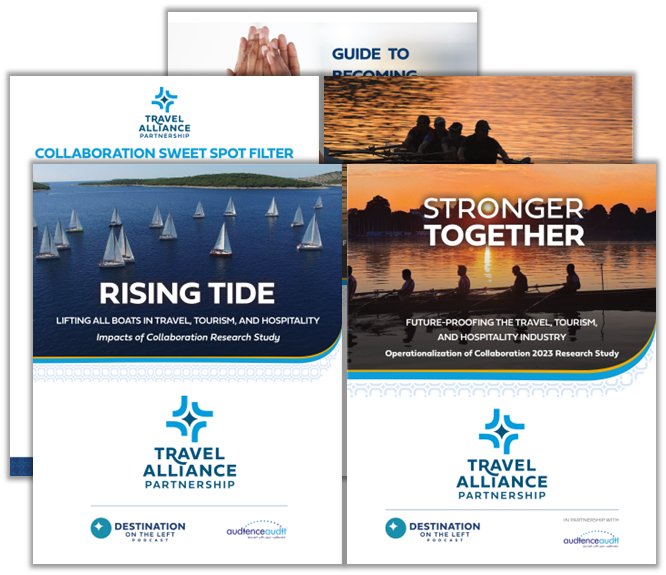How to Vet a Social Media Influencer
As we all know, the media landscape is shifting from traditional journalists and publications to bloggers and social media influencers. Travelers are interested in seeing where other people are visiting, what dishes they’re eating, and what awesome experience they’re having. So it only makes sense that destinations are partnering with travel influencers more often as part of their marketing strategy. While it’s easy to ask a journalist for the circulation and impressions of their publication, it’s a bit harder to figure out the reach or ROI of a social media influencer.

Read our blog for a quick refresher on what a social media influencer is and how destinations can successfully work with them.
Influencers may reach out to your destination directly, come through a PR agency or state organization like I Love NY, be part of a FAM following a conference or show, or you may be interested in reaching out to them directly. No matter how an influencer comes across your desk, it is important to figure out whether it is worth spending your time and resources (or your partners’ resources) on hosting them. Here are 12 tips for vetting a social media influencer.
Questions to Ask Yourself:
- Are they asking to be paid? This isn’t a deal breaker, but could be a red flag. First of all, many influencers are satisfied with trading an experience for their posts. Provide the monetary value of the trip you are offering: overnight accommodations, activities and experiences, food, and travel expenses. If they’re interested in negotiating payment, discuss the expectations and deliverables (see question 2). Make sure there’s something in it for your destination – such as rights to all of their photos and videos, or getting exclusivity on travel posts for six months. Whenever money is involved, write up a quick agreement to cover both parties.
- What are their deliverables? An influencer should have a general idea of what they will produce before, during and after the trip. During early discussions, find out what social media platforms they plan to post on and how often they will post (once a day, at every stop, etc.). Will they write a blog post on the destination, or pick out a few places they visited? Keep in mind, this may differ once they’re in your destination, but it’s important to know they’ve thought it through. Flexibility is important, as what they were thinking may change once they arrive.
- How did you meet this influencer? Did they come from a reputable source, such as a media event or through a media organization? Do you know other destinations or brands that have worked with them? For example, I Love NY does a good job of vetting influencers and bloggers that attend their media marketplaces. While you should still do your own research, it’s good to know others have checked them out as well.
Consider their Followers:
- Quantity of followers. This is the first indication whether you want to spend your time and resources. However, we’ve said it before and we’ll say it again – a large audience is not automatically better than a small audience. There are a couple reasons why it’s actually a great idea to work with an influencer with a smaller audience:
- Start developing relationships with influencers before they become popular, and they’ll continue to engage with your destination as their following grows.
- If you have a specific product and they have a niche following, it’s like you’re talking directly to your target audience.
- Quality of followers. The point of working with an influencer is to get to their following, so make sure they are reaching your target audience. Scroll through their followers to see who they are. If you’re hosting them for a family-friendly FAM or showing off your beautiful waterfalls, you will want their audience to consist of moms or outdoor-lovers, respectively. How many of their followers are brands, destinations or other travel influencers? (Common phrases in their handles may be: travel, traveler, nomad, wander, etc.) Do any seem like follower bots or fake accounts? These can be red flags. Don’t be afraid to ask where their followers come from. As Dalene Heck said, “…we can see they’ve got 20,000 Facebook fans, but 10,000 of them are from a third-world country, and unless that brand wants to market to that third-world country, those numbers are really kind of useless to that brand or destination.”
- Engagement. It doesn’t matter the size of their audience if no one is engaging with their posts. Look at how many likes, comments, shares, retweets, etc. their posts get. The engagement should be proportional to the number of followers. For example, it’s not a good sign if they have 50,000 followers but their posts receive under 100 likes.
Consider their Posts:
- Frequency of posts. How often do they post on their platforms? You want to host someone whose blog or social channel has momentum, not one that has been stagnant. Instagram influencers should post every couple of days, if not every day. Bloggers should post an article every couple of weeks (and share them across their platforms!).
- Content of posts. What do they typically post about and does it align with your destination? If most of their Instagram posts are of beaches and your destination has no water, it’s probably not a good fit. When it comes to blog posts, what do they write about? Are they digging into a destination’s hidden gems such as the best biking trail to catch a sunset? Or do they simply share listicles of things to do or collages of photos with no context?
- Quality of posts. Make sure their website or blog looks professional and well-maintained. Would you want these posts representing your destination? Spelling errors, incorrect grammar or poor photography are all turn-offs. Click on their social icons to make sure they are linked properly to their accounts. Although Instagram influencers are prevalent, not everyone has an eye for photography. Look for photos that are well-lit, well-balanced, in focus, and tell a story. How do they show off a destination? Do they take beautiful landscapes of state parks, up-close details of a farmer’s market, or is it always in the background of their selfie?
Red Flags to Avoid:
- Spike in followers. Sadly, it’s common for some influencers to falsify their reach and following. A quick way to check is by searching their handle on Socialblade. A large jump in followers over a short period of time means they probably purchased them. Below, this Instagram influencer gained 20,000 followers in a six-month period. Take it from someone who runs Instagram accounts, it’s pretty hard to grow a large following that quickly.

- Falsified engagement. You have to look beyond the number of likes or comments on a post to who is liking or commenting. Some Instagram influencers are part of “pods” – a group of Instagrammer friends that are obligated to engage with each other’s posts to make them look more popular. One quick way of telling- do all of the comments essentially say the same thing, with different emojis? Are the same seven people commenting on every photo? Does the person posting not interact with any comments? They’re most likely part of a pod.
- Clickbait. Clickbait is still roaming rapid around the internet, so you can’t take photos or posts at face value. Pay attention to blogs with titles that over-promise, or captivating Instagram photos with captions that promote an influencer’s contest or referral code.
Author
Related Posts
